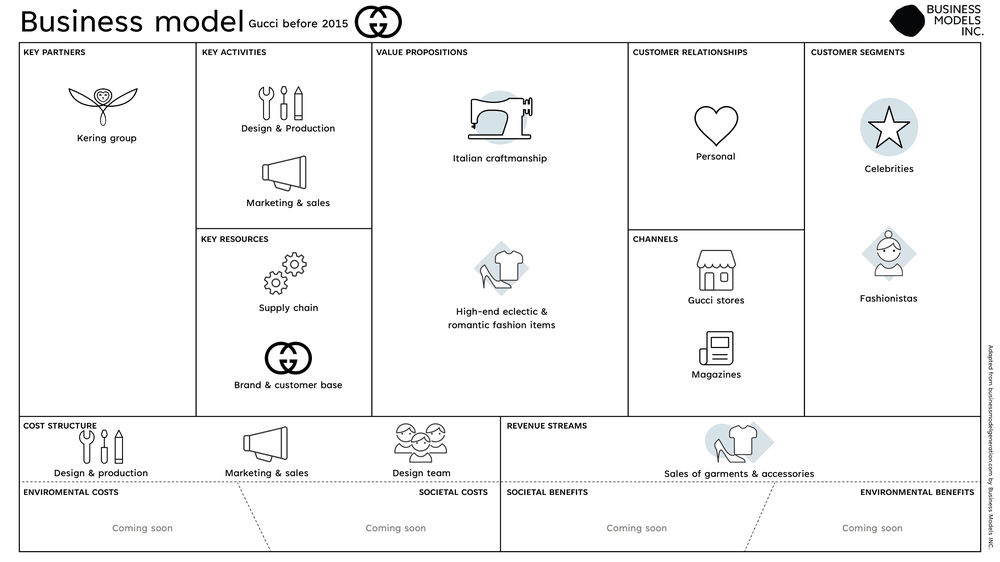Redesigning its legacy.
After two turbulent decades filled with family feuds and changing creative directors, 2015 marked the beginning of a new area for Gucci. When Marco Bizzarri became CEO and Alessandro Michele joined him as Creative Director the company quickly adapted their strategy.
First, the new leadership focused on transforming company culture by creating an environment that empowers employees, encourages innovation, and builds on diversity and inclusion. Second, Bizzarri and Michele shared a bold vision for the company where they wanted creativity to become the priority and online presence to become as important as their physical points of sale: Gucci was to become the first legacy luxury brand to behave as a “digital native”.
A new narrative for a new customer segment.
Gucci started focusing on a new customer segment that was not part of their target audience before; young adolescents. They not only redesigned their apparel and accessories but also their narrative so that they could connect with millennials emotionally through different channels. The brand evolved from traditional runway shows and models into using role models and Instagram.
Following the strategy of its parent company Kering Group, Gucci, is focusing on its channels to tell its story. By integrating its digital and in-store experience, the brand was able to create an omnichannel strategy that makes its audience come back for more.
Check out Gucci's business model canvas after 2015.




